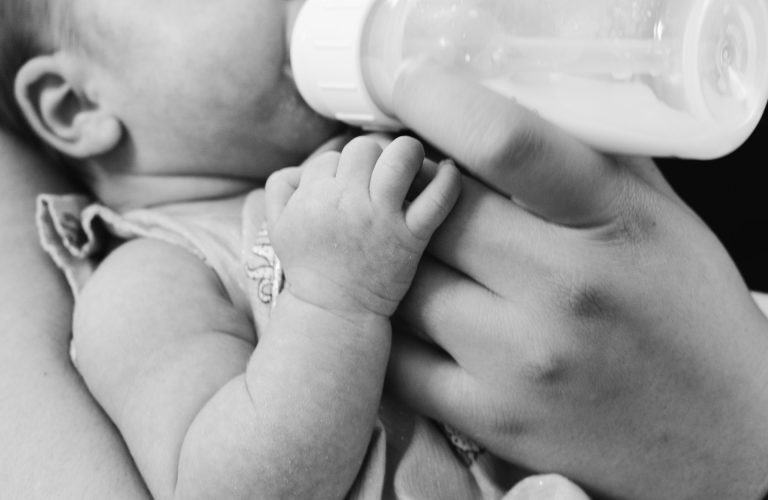Green Frothy Poop Breastfed Baby: A Complete Guide

Watching a baby’s diaper might not seem exciting, but it’s actually one of the best ways to understand how a little one is doing.
Parents often check baby poop to learn about their health and digestion. Sometimes, breastfed babies have green, frothy poop. This can surprise many parents.
Green frothy poop in breastfed babies usually means their tummy is still adjusting to milk. It may also indicate that the baby is getting too much of one type of milk.
This is typically normal and not a cause for concern. However, it’s important to know what to watch for and when to consult a doctor.
This guide explains what green frothy poop means and when parents should be cautious.
What Is Green Frothy Poop in Breastfed Babies?
When you change your breastfed baby’s diaper and see green, bubbly, or frothy poop, it can be surprising. Green frothy poop usually looks lighter or darker green and has a foamy, bubbly texture.
Unlike the typical mustard-yellow, smooth, and seedy stool that many breastfed babies experience, green, frothy poop appears more watery and can sometimes resemble foam or froth.
This imbalance can cause the stool to appear green and frothy. Other causes include minor digestive system immaturity or a temporary reaction to something in the baby’s or mom’s diet.
1. Characteristics of Green Forthy Poop
Green frothy poop in breastfed babies typically has a few distinct features that set it apart from regular bowel movements.
The color can vary from light to dark green, depending on several factors such as milk intake and digestion. Its texture is often bubbly or foamy, rather than smooth, and the consistency tends to be watery or loose.
Parents may also notice that these bowel movements happen more frequently than usual. While these changes can be surprising, they are often harmless and reflect temporary shifts in feeding or digestion.
2. How It Differs from Normal Breastfed Baby Poop
| Feature | Normal Breastfed Baby Poop | Green Frothy Poop |
|---|---|---|
| Color | Mustard yellow | Green (light to dark) |
| Texture | Smooth and slightly seedy | Watery and foamy |
| Appearance | No bubbles or froth | Bubbly or frothy |
| Consistency | Soft, paste-like | More watery or loose |
3. Common Causes of Green Frothy Poop
Several factors cause green frothy poop in breastfed infants, often due to a foremilk-hindmilk imbalance where babies consume more lower-fat foremilk and insufficient calorie-dense hindmilk.
This can lead to foamy, green stools. Another common reason is the baby’s maturing digestive system, which causes temporary changes in the texture and color of their stool.
Additionally, babies may exhibit sensitivity to certain foods in their mother’s diet, such as dairy products or cruciferous vegetables, which can impact digestion.
In less common cases, minor infections or mild gut irritation may also affect the appearance of the stool, although other symptoms typically accompany these.
What Causes Frothy or Foamy Baby Poop?

Frothy or foamy poop in breastfed babies can look unusual and sometimes worry parents. This texture typically indicates that your baby’s digestive system is reacting to something or is still developing.
Here are the common reasons why your baby’s poop might be frothy or bubbly:
-
Foremilk-Hindmilk Imbalance: When your baby gets too much foremilk, which is watery and lactose-rich, the extra lactose can cause gas and frothy stools.
-
Digestive System Immaturity: Babies, especially newborns, have immature digestive tracts that can’t always break down milk fully, leading to bubbly or foamy poop.
-
Food Sensitivities or Allergies: Sensitivities to dairy, soy, or other foods in the mother’s diet (or less commonly in formula) can irritate the baby’s gut and cause frothy stools.
-
Mild Gut Infections or Irritations: Occasionally, mild infections or inflammation in the digestive system may produce frothy poop, but this is less common.
When Is Green Frothy Poop a Concern?

While green frothy poop is usually normal for breastfed babies, there are times when it might signal a problem.
It’s important to pay attention to your baby’s overall behavior and health, as well as the appearance of the poop.
1. Signs That Green Frothy Poop May Indicate an Issue
While green frothy poop in breastfed babies is often harmless, certain signs may suggest that something more serious is going on.
If the stool appears very watery, contains mucus, or has traces of blood, it may indicate an underlying concern. Pay attention if your baby seems unusually fussy, cries more than normal, or has difficulty feeding.
Other red flags include poor weight gain, persistent or worsening diaper rash, and any signs of dehydration, such as fewer wet diapers or a dry mouth.
2. Symptoms to Watch For
Parents should also be alert for other symptoms that may accompany changes in their child’s bowel movements.
These include excessive fussiness or irritability after feeding, frequent vomiting or regurgitation, and noticeable difficulties with feeding.
If the green, frothy poop persists for several days without improvement or if your baby develops a fever or appears unwell, it may signal a more serious issue that requires evaluation.
3. When to Call the Pediatrician
You should contact your pediatrician if you notice any of the following: blood or mucus in the stool, signs of dehydration, feeding issues, severe diaper rash, or general discomfort that doesn’t improve.
Also, if your baby is very sleepy, less responsive than usual, or running a fever, it’s important to seek medical advice promptly.
When in doubt, it’s always best to reach out to your healthcare provider for reassurance and to ensure your baby’s health and comfort.
How to Help Your Baby with Green Frothy Poop

If your breastfed baby has green frothy poop, there are simple ways to help improve their digestion and comfort. Often, small changes in feeding habits and the mother’s diet can make a significant difference.
Here are some tips and remedies to try:
-
Balance Foremilk and Hindmilk: Make sure your baby finishes one breast before switching to the other. This helps them get enough creamy, fatty hindmilk, which can reduce green, frothy stools.
-
Adjust Breastfeeding Technique: Keep your baby latched well and in a comfortable position to promote effective feeding and better milk flow.
-
Dietary Changes for Mom: Try reducing or avoiding foods that might irritate your baby’s digestion, such as dairy, caffeine, or certain vegetables like broccoli or spinach.
-
Consider Probiotics: Consult with your pediatrician about introducing probiotics to your baby to support healthy gut bacteria, which can enhance digestion and reduce the occurrence of frothy stools.
-
Monitor Feeding Frequency: Feeding your baby on demand and avoiding long gaps can help maintain good digestion and reduce digestive upset.
-
Keep Baby Hydrated: Ensure your baby is nursing well and getting enough fluids to stay hydrated, especially if the poop is watery.
Common Myths About Green Frothy Poop in Breastfed Babies
Let’s clear up some common misconceptions and explain what’s truly normal versus what might need attention.
1. Myth: Green poop always means your baby is sick.
Reality: Green frothy poop is often normal and linked to feeding patterns or mild digestion changes, not illness.
2. Myth: You must stop breastfeeding if your baby has green poop.
Reality: Breastfeeding is usually safe and beneficial even when the poop changes.
3. Myth: Green poop means your baby isn’t getting enough milk.
Reality: Green, frothy poop can happen even when the milk supply is good; it often relates to milk balance, not quantity.
4. Myth: All green poop is caused by allergies.
Reality: Allergies are one possible cause, but not the only one.
When to Seek Medical Advice?

Green frothy stools in breastfed babies are typically normal and often result from a foremilk-hindmilk imbalance.
This happens when babies get too much of the lighter foremilk without enough of the richer hindmilk that comes later in feeding.
Normal signs: Baby feeds well, gains weight, and seems content.
Watch for concerns, including excessive fussiness, feeding difficulties, discomfort, or skin rashes.
When to call your pediatrician: If green stools persist alongside other warning signs or if you notice changes in your baby’s overall behavior and feeding patterns.
Simple adjustments: Try letting your baby finish one breast before switching to the other side, and consider feeding more frequently for shorter periods of time. Most cases resolve on their own as your baby’s digestive system matures.
Conclusion
In most cases, green frothy poop in breastfed babies is normal and often results from the balance of milk they’re receiving or minor digestive adjustments.
If the green stool persists for a few days but your baby remains happy and healthy, there is generally no cause for concern.
However, if you observe additional symptoms such as irritability, reduced feeding, or the appearance of a rash, it’s best to consult your pediatrician.
Ultimately, trust your instincts as a parent. Keep a close watch on your baby’s overall well-being, and if anything feels off, seeking professional advice can offer clarity and reassurance.






